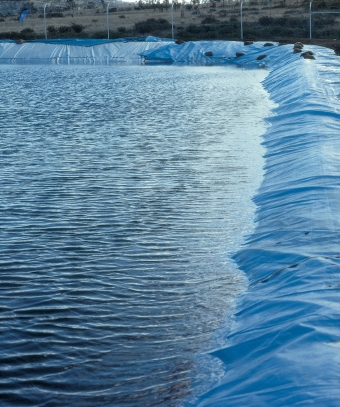
Water plays a vital role in the growth of plants and the production of all crops. It provides the medium by which chemicals and nutrients are carried through the plant and above all, the main constituent of the physiological plant tissue and a reagent in photosynthesis. However, soil moisture is the source of water which is of importance to crops and the state of moisture is controlled by rainfall, the evaporation rate and soil characteristics.
It’s safe to say that nearly every farmer will experience drought at some point in his career. So let us discuss ways farmers can prepare for any eventualities when it comes to drought.
Assess Your Water Supply
Water supply is one of the things you need to consider before getting land for farming. It is always a good idea to consider what water resources are available on your land. While using municipal water supplies can be convenient, costs will quickly add up and water restrictions could prevent you from using such water during a drought.
An ideal farm would have plenty of water either via a deep well or spring with a working pump. Ponds, streams, and creeks can all contribute to the farm’s water supply in dry times. Speak with your local extension office or water office to find out what the rules are where you live concerning man-made water bodies.
Harvest rainwater
When you have a farm it is very important to start planning farm infrastructure. Water should be one of your first thoughts as you are planning fences, outbuildings, et cetera. Work to situate crops and livestock in a way that your water supply will be easily accessible. When precipitation falls on your property, be prepared to capture as much of it as you can through the use of rain barrels and water tanks. To ensure that you have enough water storage to meet the needs of livestock, invest early on storage spaces so that when dry season approaches, you will be adequately prepared.
Assess your soil content
Tanks certainly aren’t the only place to store water. Healthy soil with plenty of organic matter retains moisture better than poor, dense soils, so keep adding compost to your land.
Swales, which are closed ditches built along the natural contour of your farmland, can also be useful for capturing water and sinking it into the soil. Unlike a ditch, where the water is flowing to another place, swales hold water much like a bathtub, slowing it down and allowing it maximum time to absorb into the soil. As a bonus, plants and trees can be planted along the swale line and will benefit from the added moisture.
Make a Water Conservation Plan
Now that you’ve managed to store plenty of water on your farm, what’s next? Conservatively using the water you’ve saved is critical to surviving dry-weather conditions. There are several ways you can conserve water on your farm:
- Minimize evaporation by planting crops closer together and using heavy mulch to cover soil.
- Use irrigation systems, such as drip lines, that provide targeted, maximum impact without losing moisture to overspray or evaporation.
- Schedule irrigation times in the cool, early part of the day to keep evaporation to a minimum. Don’t water unless you’re sure the soil needs it—use a soil moisture meter if you aren’t sure.
- Weed frequently so that you aren’t wasting moisture on something that isn’t intended for harvest.
- If your current crop load is using too much water for your area, consider switching up what you plant or changing crop rotations. Select native plants and plants that thrive on low moisture. In the vegetable garden, look for seeds labeled “drought-resistant” or “drought-tolerant.”
Planting
In dry season farming, planting should be done early in the morning or in the evening. Also, the right plant distance and spacing should be followed. This is essential to prevent competition among the crops. After planting, the plants should be watered daily or as required. The system of irrigation can be drip irrigation or rain gun system.
Monitoring your water
If you’ve planned ahead, there will be less reason to panic when drought sets in. However, it’s still important to monitor your farm’s water situation and allocate it wisely. Drought conditions can also cause toxicity problems for livestock. Nitrate levels can increase in their forage, leading to illness and death.
Even if you have sufficient water stored on the farm, water quality can be a problem during hot, dry weather. If your area is experiencing severe drought, speak with your local extension agency to arrange testing for your water and forage to protect your livestock.
Overall, when starting the process of dry season farming, it is important you contact a professional prior to installing your irrigation system. This is because an improperly installed irrigation system can lead to uneven distribution of water and fertilizer over the land area adversely affecting your yield. Contact Mazero Agrifood on 0729777711 for any inquiries on water harvesting, storage and irrigation systems.

